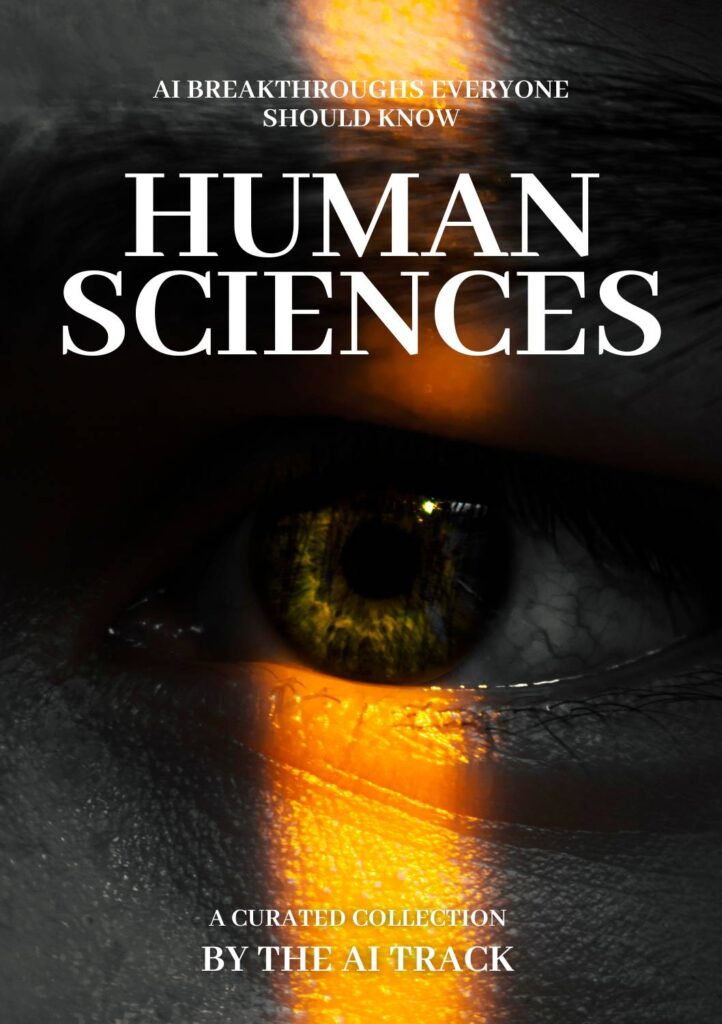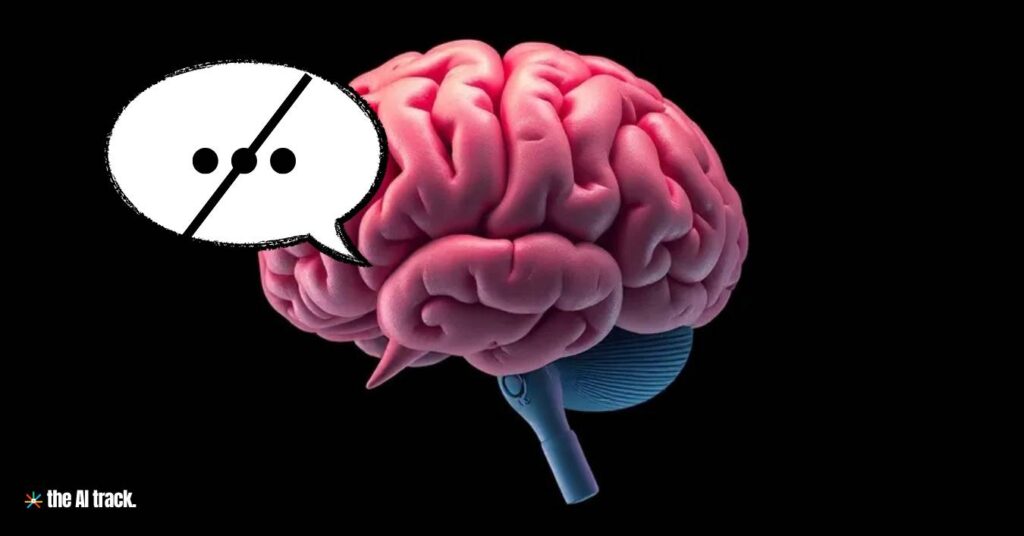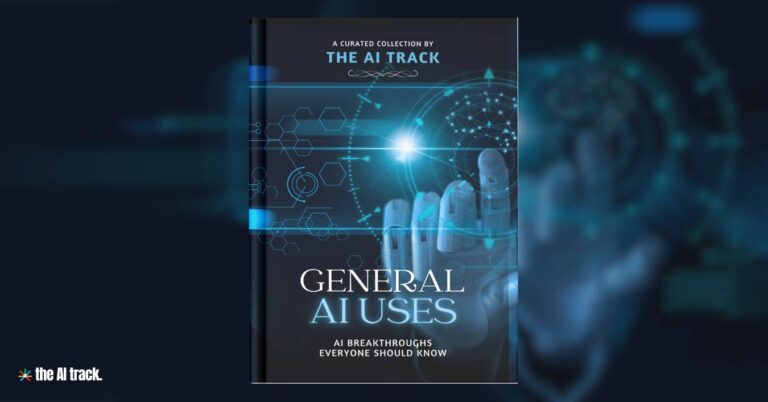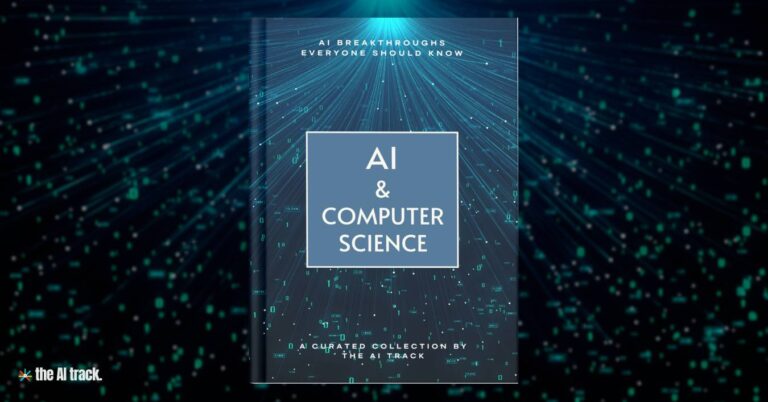AI Breakthroughs in Human Sciences - At a Glance

AI is providing new insights into human behavior, cognition, and society, revolutionizing the human sciences. This section explores AI breakthroughs in Human Sciences: the most important AI-driven discoveries and their implications for understanding ourselves.
Each section offers insights into how AI is transforming different sectors, providing a comprehensive view of its impact across a wide range of disciplines.
The Transformative Power Of AI In Politics: Reshaping Campaigns, Governance, And Democracy

The AI Track’s extensive analysis of the impact of AI in politics, revealing its transformative impact on elections, campaigns, and governance. Our analysis underscores the dual nature of AI as a tool for advancing democratic engagement and policy-making, while also posing risks like the spread of disinformation
Artificial Intelligence Is Making 2,000-Year-Old Scrolls Readable Again
Original Article Title:
How Artificial Intelligence Is Making 2,000-Year-Old Scrolls Readable Again
Source: Smithsonian Magazine
Date: May 2, 2024
Using artificial intelligence, researchers have developed a method to read ancient scrolls from Herculaneum, which were previously unreadable due to damage from the Vesuvius eruption in 79 C.E. The “Vesuvius Challenge,” involving AI technology, enabled the deciphering of these scrolls, providing a breakthrough in understanding historical texts without physically unrolling them. This initiative not only showcases AI’s potential in archaeology but also marks a significant advancement in preserving and studying ancient literature.
AI has been employed to decipher ancient Mesopotamian tablets, including parts of the Epic of Gilgamesh
Original Article Title:
Piecing Together an Ancient Epic Was Slow Work. Until A.I. Got Involved
Source: The New York Times
Date: August 12, 2024

Key Takeaway: AI has been employed to decipher ancient Mesopotamian tablets, including parts of the Epic of Gilgamesh, uncovering previously unreadable texts and offering new insights into ancient civilizations.
Key Points:
- AI Use: AI technology is used to restore and read damaged or fragmented tablets.
- Significant Discoveries: New sections of Gilgamesh and other ancient texts have been reconstructed.
- Cultural Impact: This breakthrough enhances our understanding of ancient cultures and literature.
Why This Matters: This advancement demonstrates AI’s potential to revolutionize archaeology and historical research.
How AI is Diagnosing and Treating Mental Health Disorders
Original Article Title:
Artificial intelligence in positive mental health: a narrative review
Source: National Lirbary of Medicine
Date: 18 March 2024

Key Takeaway: AI is transforming mental health care by enhancing diagnosis, treatment, and emotional regulation, with machine learning, natural language processing (NLP), and reinforcement learning playing significant roles. Despite its potential, ethical issues like privacy, biases, and the need for human oversight persist.
Key Points:
- AI in Diagnosis and Treatment:
- AI aids in diagnosing mental health conditions such as depression, anxiety, and schizophrenia. Machine learning models analyze patient data to recommend tailored treatments. In schizophrenia, AI can detect early speech pattern changes indicating symptoms.
- Personalized treatment recommendations are made based on individual characteristics. For example, AI chatbots can engage patients in conversations and suggest behavioral interventions based on emotional state monitoring.
- Deep learning techniques analyze brain scans to identify early markers of neurodegenerative disorders like Alzheimer’s and Parkinson’s.
- AI in Emotional and Cognitive Health:
- AI-powered applications help in emotional regulation by offering real-time interventions. AI-driven emotion-sensing systems use facial expressions, voice, and physiological data to assess emotional states.
- For emotional dysregulation, AI assists in guiding individuals through cognitive-behavioral exercises, improving emotional intelligence, and managing stress or depression symptoms. AI tools, such as virtual therapists and biofeedback systems, are used to teach emotional regulation skills.
- Cognitive impairments are managed by AI systems that improve diagnosis accuracy. Machine learning techniques like support vector machines (SVM) and neural networks are used in cognitive assessments for early detection.
- AI for Specific Disorders:
- Autism Spectrum Disorder (ASD): AI analyzes video interactions, facial expressions, and gestures to detect early signs of ASD. This helps clinicians identify and intervene earlier in a child’s development.
- Schizophrenia: AI tracks speech patterns to detect subtle signs of schizophrenia. Predictive models can foresee relapses based on emotional or linguistic changes.
- Seizures: Machine learning processes electroencephalography (EEG) recordings to detect seizure patterns, helping predict and manage epileptic episodes.
- Ethical Considerations and Challenges:
- Privacy and Data Security: Handling sensitive data such as patient health records requires strict privacy measures. AI systems must protect this data to avoid unauthorized access.
- Bias in AI Algorithms: AI systems trained on biased data can perpetuate inequities in diagnosis and treatment, especially for minority or underrepresented populations. Cultural sensitivity is critical for AI models.
- Human Oversight: AI in mental health should support, not replace, human professionals. Maintaining a balance between AI-generated recommendations and human judgment ensures responsible care.
- Patient Trust and Transparency: AI systems need to be transparent in their decision-making processes to build trust among users and clinicians.
Why This Matters: AI’s role in mental health is expanding rapidly, offering more accurate diagnoses, personalized treatments, and accessible emotional regulation tools. However, the ethical concerns regarding privacy, cultural bias, and the human-AI interaction underline the importance of responsible AI development. As AI continues to evolve, collaboration between mental health professionals and AI experts will be essential to ensure it serves humanity without compromising ethical standards.
The Impact of AI in Work: Challenges, and Opportunities

The AI Track’s extensive analysis of the impact of AI in reshaping jobs and workplaces, emphasizing the need for human-AI collaboration and upskilling in the AI-driven workforce.
How AI Is Playing an Increasing Role in Scientific Publications
Original Article Title:
Artificial intelligence will play an increasing role in scientific publications
Source: EurekAlert!
Date: 3 September 2024

Key Takeaway:
Artificial Intelligence (AI) is expected to transform the landscape of scientific publication by assisting in peer review, manuscript drafting, and even helping editors predict the impact of submitted papers. While AI will not replace editors or peer reviewers, it will make the process more efficient and objective.
Key Points:
- AI in Peer Review: AI can help solve the issue of finding enough peer reviewers by providing an initial score for a manuscript. Editors could use this score to determine whether an article should go through external peer review or receive direct revisions based on AI’s analysis.
- Manuscript Drafting and Assistance: AI is expected to assist in drafting scientific papers, making the writing process faster and more efficient for researchers.
- Impact Prediction: AI could be used by journal editors to predict how much attention an article might receive based on citations. This information could help journals enhance their influence and align article selection with their mission.
- Objective Manuscript Triaging: AI can provide additional data about the quality of a manuscript, making the selection process quicker and more objective, particularly in areas where challenges like finding reviewers exist.
- Enhancing Journal Reach: AI could assist editors in increasing the visibility of their journal by maximizing its reach through social media and other communication networks. AI might also support understanding of “open science,” including open peer-review and open access.
Why This Matters:
The integration of AI into scientific publishing could dramatically streamline the review and editorial processes, enabling faster and more accurate decision-making. This transformation could make scientific journals more effective at publishing high-quality research while addressing challenges in the peer-review process, and potentially increasing the overall impact of published articles.
Arch-I-Scan: Revolutionizing Archaeological Artifact Identification
Original Article Title:
Arch-I-Scan | Archaeology and Ancient History | University of Leicester
Source: Arch-I-Scan
Date: –
Key Takeaway:
Arch-I-Scan is an innovative project led by the University of Leicester that uses AI and machine learning to automatically identify and record Roman pottery. It aims to transform how archaeologists handle vast quantities of archaeological data, making the analysis of Roman artifacts faster, more comprehensive, and consistent.
Key Points:
- Automated Artifact Identification: Arch-I-Scan uses cutting-edge AI to scan, identify, and catalog Roman pottery fragments, helping overcome the time-intensive manual classification methods traditionally used in archaeology.
- Large-Scale Application: The system is being trained using over 100,000 pottery sherds from various collections, including those from the Museum of London and Vindolanda Trust, to refine its recognition capabilities. The AI will process and store data on both complete and fragmentary pottery.
- Machine Learning for Archaeology: By using handheld devices, even non-experts can capture images of pottery fragments, and the AI will automatically recognize the type and categorize it. This opens up new possibilities for research into Roman food consumption and social practices based on ceramic finds.
- Partnerships and Goals: The project is supported by partnerships with institutions like the Museum of London Archaeology and aims to build a comprehensive database of Roman ceramic artifacts, furthering research into historical socio-cultural practices.
Why This Matters:
Arch-I-Scan has the potential to dramatically increase the efficiency of archaeological analysis by reducing the need for specialized knowledge to classify artifacts. This will allow more comprehensive studies of Roman history and material culture, providing insights into ancient daily life on an unprecedented scale.
New AI System Detects Rare Epileptic Seizures
Original Article Title:
Artificial intelligence will play an increasing role in scientific publications
Source: USC Viterbi
Date: 4 June 2024
Key Takeaway: USC researchers have developed an AI system that significantly improves the detection of rare epileptic seizures by analyzing brain interactions from EEG data. This technology promises to enhance early diagnosis and treatment, potentially saving lives by identifying complex seizure patterns that are difficult for humans to detect.
Key Points:
- Prevalence and Impact of Epilepsy:
- Over 3.4 million people in the U.S. and 65 million worldwide have epilepsy.
- Epilepsy causes seizures and affects the nervous system, with 1 in 26 people developing epilepsy in their lifetime.
- Approximately 1,000 people with epilepsy die unexpectedly each year.
- AI System Development:
- The AI model analyzes brain interactions using EEG data, integrating multiple sources of information like electrode positions and brain regions.
- It demonstrates a 12% improvement over existing models in detecting rare seizures, enhancing diagnostic accuracy.
- Clinical Application:
- The system supplements doctors’ diagnoses by providing additional data to identify seizures that might be missed.
- It could eventually be incorporated into wearable sensors for real-time monitoring, offering continuous support for epilepsy patients.
Why This Matters: Early and accurate detection of epileptic seizures is crucial for effective treatment and improving the quality of life for patients. With 70% of people with epilepsy potentially living seizure-free if adequately diagnosed and treated, this AI system can lead to timely medical responses, reducing risks associated with undiagnosed seizures. Integrating this technology into wearable devices can provide continuous monitoring, helping patients and healthcare providers manage epilepsy more effectively. This advancement showcases the potential for AI to improve healthcare outcomes and save lives.
Voices of AI: Insights and Quotes from the Top’ offers a unique compilation of quotes and perspectives from top AI executives and thinkers.
How artificial intelligence is helping to identify global inequalities
Original Article Title:
How artificial intelligence is helping to identify global inequalities
Source: Nature
Date: 27 May 2024
Key Takeaway:
AI is playing a crucial role in identifying and addressing global inequalities by helping researchers understand income distribution and societal divisions. These insights are essential for developing effective policies aimed at reducing inequality within and among countries, as outlined in the UN’s Sustainable Development Goal 10.
Key Points:
- Machine learning tools help identify key predictors of inequality.
- AI aids in understanding income distribution and societal divisions.
- The goal is to ensure sustained income growth for the bottom 40% of the population.
- Researchers emphasize the importance of tackling inequality to improve overall societal well-being and economic performance.
- Highlighting inherited inequalities can drive political support for redistributive policies.
Iconem’s Groundbreaking Work in 3D Digitization of Cultural Heritage
Original Article Title:
About Iconem
Source: Iconem
Date: –

Key Takeaway:
Arch-I-Scan is an innovative project led by the University of Leicester that uses AI and machine learning to automatically identify and record Roman pottery. It aims to transform how archaeologists handle vast quantities of archaeological data, making the analysis of Roman artifacts faster, more comprehensive, and consistent.
Key Points:
- Automated Artifact Identification: Arch-I-Scan uses cutting-edge AI to scan, identify, and catalog Roman pottery fragments, helping overcome the time-intensive manual classification methods traditionally used in archaeology.
- Large-Scale Application: The system is being trained using over 100,000 pottery sherds from various collections, including those from the Museum of London and Vindolanda Trust, to refine its recognition capabilities. The AI will process and store data on both complete and fragmentary pottery.
- Machine Learning for Archaeology: By using handheld devices, even non-experts can capture images of pottery fragments, and the AI will automatically recognize the type and categorize it. This opens up new possibilities for research into Roman food consumption and social practices based on ceramic finds.
- Partnerships and Goals: The project is supported by partnerships with institutions like the Museum of London Archaeology and aims to build a comprehensive database of Roman ceramic artifacts, furthering research into historical socio-cultural practices.
Why This Matters:
Arch-I-Scan has the potential to dramatically increase the efficiency of archaeological analysis by reducing the need for specialized knowledge to classify artifacts. This will allow more comprehensive studies of Roman history and material culture, providing insights into ancient daily life on an unprecedented scale.
Restoring and attributing ancient texts using deep neural networks
Original Article Title:
Restoring and attributing ancient texts using deep neural networks
Source: Nature
Date: 9 March 2022
Key Takeaway:
Ithaca is a deep neural network that assists in restoring ancient Greek inscriptions, attributing their geographical origin, and determining their dates. Ithaca provides scholars with a powerful AI tool to restore fragmented texts, reaching an accuracy of 62% for text restoration and 71% for geographical attribution, significantly enhancing historical research capabilities.
Key Points:
- AI in Archaeology: Ithaca uses deep learning to restore missing parts of ancient inscriptions.
- Collaboration: Ithaca works with scholars to attribute texts and narrow dating ranges.
- Restoration Success: Ithaca achieves 62% restoration accuracy.
- Geographical Attribution: Provides 71% accuracy in locating inscriptions’ origins.
- Historical Impact: Facilitates understanding of historical inscriptions and aids researchers in exploring fragmented archaeological texts.
Why This Matters:
The integration of AI in historical research, such as with Ithaca, marks a new era in deciphering ancient texts, opening doors to more efficient, accurate, and large-scale historical reconstructions.
Explore our AI Books hub for detailed summaries of the most influential AI books. Discover key insights, actionable takeaways, and viral quotes.
Uncovering Archaeological Sites in Airborne LiDAR Data with Data-Centric AI
Original Paper Title:
Uncovering Archaeological Sites in Airborne LiDAR Data with Data-Centric AI
Source: IEEE Access [Paper]
Date: 6 July 2023

Key Takeaway:
The paper presents a novel approach that combines LiDAR technology and data-centric artificial intelligence (AI) to efficiently identify potential archaeological sites, particularly burial mounds, reducing the need for labor-intensive fieldwork. By processing LiDAR data and enhancing it through AI-driven object detection, this method significantly minimizes false positives while improving archaeological mapping efforts.
Key Points:
- Use of LiDAR for Archaeology:
- LiDAR (Light Detection and Ranging) is increasingly used to map and detect archaeological sites by creating 3D models of landscapes. It allows archaeologists to peer through dense vegetation and capture subtle topographical features that may indicate hidden structures or mounds.
- Challenges in Detecting Burial Mounds:
- LiDAR data presents challenges because the top-down perspective may confuse natural and artificial formations with archaeological features. This leads to frequent false positives when trying to identify burial mounds.
- Data-Centric AI Approach:
- To overcome these challenges, the research introduces a data-centric approach by converting LiDAR data into 2D digital elevation models (DEMs) and annotating known burial mounds.
- A copy-paste object embedding technique augments this dataset by placing burial mounds in varied regions, which helps train the AI model to detect potential sites.
- YOLOv5 Object Detection Algorithm:
- The system uses the YOLOv5 algorithm, a popular object detection model, to identify potential new burial mounds in unseen data. It is trained using the augmented dataset to enhance accuracy in archaeological site detection.
- Post-Processing Validation:
- A two-step validation process ensures the accuracy of the results:
- Location-Based Ranking (LBR) to confirm that the identified sites are within regions of archaeological interest.
- 3D Shape Analysis to compare detected shapes with the 3D structure of known burial mounds.
- A two-step validation process ensures the accuracy of the results:
- Results and Accuracy:
- The approach achieved a 72.53% positive rate in identifying potential burial mounds in the Alto Minho region. While some false positives, such as rock outcrops, passed validation, the system drastically reduced overall false positives, aiding archaeologists in focusing fieldwork on more likely sites.
Why This Matters:
This data-centric AI-driven method revolutionizes the archaeological mapping process, reducing manual labor and increasing detection accuracy. It paves the way for faster, more efficient identification of potential archaeological sites, saving time and resources while allowing archaeologists to prioritize fieldwork more effectively.
AI Unearths Hidden Treasures: New Nazca Lines Discovered in Peru
Original Article Title:
AI discovers hundreds of ancient Nazca drawings in Peruvian desert
Source: New Scientist
Date: 23 September 2024
Key Takeaway:
AI technology has discovered hundreds of new ancient Nazca drawings in Peru, revealing previously unknown geoglyphs that date back over 2,000 years. This technological breakthrough is reshaping our understanding of ancient civilizations and their complex cultural expressions.
Key Points:
- Discovery by AI: Researchers utilized AI to scan vast areas of the Peruvian desert, identifying over 350 new Nazca geoglyphs, including depictions of humans, animals, and mythical creatures.
- Technological Innovation: AI’s ability to analyze satellite imagery and aerial photographs quickly and accurately allows archaeologists to uncover hidden details that would be nearly impossible to detect through traditional methods.
- Historical Significance: These newly discovered geoglyphs offer insights into the Nazca culture’s artistic, religious, and societal practices, deepening our understanding of pre-Columbian South America.
Why This Matters:
This discovery underscores AI’s transformative potential in archaeology, helping to preserve and expand human knowledge of ancient cultures. It demonstrates the power of technology in historical research, allowing us to uncover and appreciate heritage sites at a new level of detail.
Science Says Language Is Just for Talking Not For Thinking
Original Article Title:
What is language for?
Source: MIT McGovern Institute
Date: 19 June 2024

Key Takeaway: The longstanding debate over whether language is primarily a tool for communication or thought has been reevaluated by neuroscientist Evelina Fedorenko and colleagues. Their findings argue that language’s primary function is communication, not the facilitation of thought, challenging the common belief that language is the medium of internal reasoning.
Key Points:
- Debunking the Thought-Language Connection: Many people believe that language plays a central role in thought because of the inner voice they experience. However, evidence from neuroscientific research suggests that language is largely separate from thought processes. Brain regions involved in language processing are generally not active during various types of thinking, such as problem-solving or reasoning.
- Evidence from Brain Injuries: Patients who have lost language abilities due to injury or stroke can still perform complex tasks such as playing chess, solving math problems, and planning future events. This highlights that thought can continue independently of language, which contradicts the idea that language is a prerequisite for reasoning.
- Intellectual Impairments and Language Skills: Some people with intellectual or neuropsychiatric disorders that impair reasoning have intact language skills, further suggesting that language is neither necessary nor sufficient for clear thinking.
- Optimization for Communication: Across many languages, linguistic features have evolved to optimize communication efficiency. For example, commonly used words tend to be short, and words with related meanings cluster together in sentences. These characteristics make language an ideal tool for transferring information, supporting the argument that language evolved primarily for communication.
- Cultural Transmission: While language has transformed human culture, its role is to transmit complex ideas and knowledge rather than to generate them. Fedorenko and her colleagues argue that language co-evolved with cognitive abilities but did not give rise to human reasoning.
Why This Matters: Understanding language’s role as primarily a tool for communication can reshape how we approach linguistic studies, cognitive science, and AI research. It challenges deeply ingrained assumptions and provides a more refined understanding of the separation between thought and language. This could have far-reaching implications for education, neuroscience, and the development of language models in AI, making sure these models are geared toward communication efficiency rather than thought simulation.








